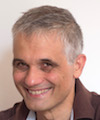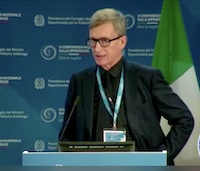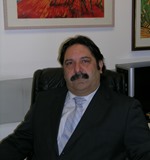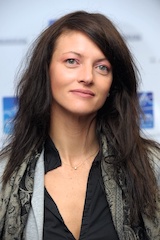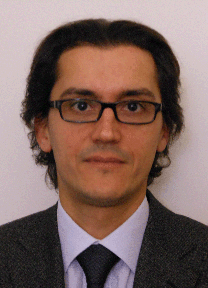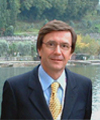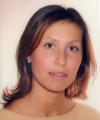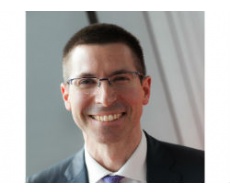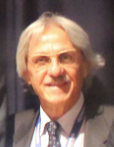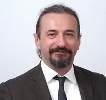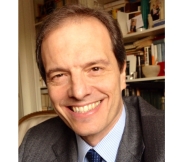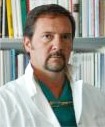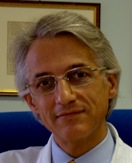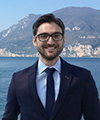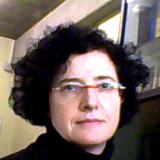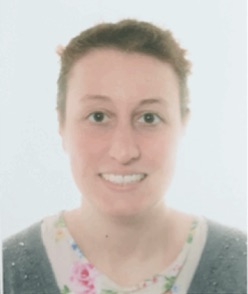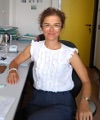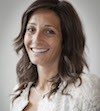Studying at the University of Verona
Academic calendar
The academic calendar shows the deadlines and scheduled events that are relevant to students, teaching and technical-administrative staff of the University. Public holidays and University closures are also indicated. The academic year normally begins on 1 October each year and ends on 30 September of the following year.
Course calendar
The Academic Calendar sets out the degree programme lecture and exam timetables, as well as the relevant university closure dates..
| Period | From | To |
|---|---|---|
| LEZIONI 1° E 2° SEMESTRE (INSEGNAMENTI ANNUALI) | Oct 1, 2019 | May 29, 2020 |
| LEZIONI 1° SEMESTRE 2°-3°-4°-5°6° ANNO | Oct 1, 2019 | Dec 20, 2019 |
| LEZIONI 1° SEMESTRE 1° ANNO | Oct 14, 2019 | Dec 20, 2019 |
| LEZIONI 2° SEMESTRE | Feb 17, 2020 | May 29, 2020 |
| Session | From | To |
|---|---|---|
| SESSIONE INVERNALE A.A. 2018/2019 E 1°SEMESTRE A.A. 2019/2020 | Jan 7, 2020 | Feb 14, 2020 |
| SESSIONE ESTIVA LAUREANDI | Jun 1, 2020 | Jul 3, 2020 |
| SESSIONE ESTIVA A.A. 2019/2020 | Jun 1, 2020 | Jul 24, 2020 |
| SESSIONE AUTUNNALE A.A. 2019/2020 | Sep 1, 2020 | Sep 30, 2020 |
| Session | From | To |
|---|---|---|
| SESSIONE INVERNALE A.A.2018/2019 | Mar 2, 2020 | Mar 13, 2020 |
| SESSIONE ESTIVA | Jul 13, 2020 | Jul 31, 2020 |
| SESSIONE AUTUNNALE | Oct 12, 2020 | Oct 23, 2020 |
| Period | From | To |
|---|---|---|
| FESTIVITA' OGNISSANTI | Nov 1, 2019 | Nov 1, 2019 |
| FESTIVITA' IMMACOLATA CONCEZIONE | Dec 8, 2019 | Dec 8, 2019 |
| VACANZE DI NATALE | Dec 24, 2019 | Jan 6, 2020 |
| VACANZE DI PASQUA | Apr 10, 2020 | Apr 15, 2020 |
| FESTA DELLA LIBERAZIONE | Apr 25, 2020 | Apr 25, 2020 |
| FESTIVITA' DEL LAVORO | May 1, 2020 | May 1, 2020 |
| FESTIVITA' DEL SANTO PATRONO SAN ZENO | May 21, 2020 | May 21, 2020 |
| FESTA DELLA REPUBBLICA | Jun 2, 2020 | Jun 2, 2020 |
| Description | Period | From | To |
|---|---|---|---|
| TIROCINIO 1° SEMESTRE ESCLUSI PERIODI DI VACANZA | TIROCINIO 1° SEMESTRE ESCLUSI PERIODI DI VACANZA | Oct 1, 2019 | Feb 15, 2020 |
| ATTIVITA' FACOLTATIVA O DI RECUPERO TIROCINIO | ATTIVITA' FACOLTATIVA O DI RECUPERO TIROCINIO | Oct 1, 2019 | Sep 30, 2020 |
| TIROCINIO 2° SEMESTRE ESCLUSI PERIODI DI VACANZA | TIROCINIO 2° SEMESTRE ESCLUSI PERIODI DI VACANZA | Feb 17, 2020 | Jul 24, 2020 |
Exam calendar
Exam dates and rounds are managed by the relevant Medicine Teaching and Student Services Unit.
To view all the exam sessions available, please use the Exam dashboard on ESSE3.
If you forgot your login details or have problems logging in, please contact the relevant IT HelpDesk, or check the login details recovery web page.
Should you have any doubts or questions, please check the Enrollment FAQs
Academic staff
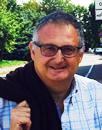
Fabrizi Gian Maria
 gianmaria.fabrizi@univr.it
gianmaria.fabrizi@univr.it
 +39 0458124461
+39 0458124461
 045 8122470
045 8122470
 roberto.gerosa@univr.it
roberto.gerosa@univr.it
 mattia.marchiori@univr.it
mattia.marchiori@univr.it
 guido.martignoni@univr.it
guido.martignoni@univr.it
 alessia.pardo@univr.it
alessia.pardo@univr.it
 dora.renna@univr.it
dora.renna@univr.it
 annarita.signoriello@univr.it
annarita.signoriello@univr.it
Study Plan
The Study Plan includes all modules, teaching and learning activities that each student will need to undertake during their time at the University.
Please select your Study Plan based on your enrollment year.
1° Year
| Modules | Credits | TAF | SSD |
|---|
2° Year activated in the A.Y. 2020/2021
| Modules | Credits | TAF | SSD |
|---|
3° Year activated in the A.Y. 2021/2022
| Modules | Credits | TAF | SSD |
|---|
4° Year activated in the A.Y. 2022/2023
| Modules | Credits | TAF | SSD |
|---|
5° Year activated in the A.Y. 2023/2024
| Modules | Credits | TAF | SSD |
|---|
6° Year It will be activated in the A.Y. 2024/2025
| Modules | Credits | TAF | SSD |
|---|
| Modules | Credits | TAF | SSD |
|---|
| Modules | Credits | TAF | SSD |
|---|
| Modules | Credits | TAF | SSD |
|---|
| Modules | Credits | TAF | SSD |
|---|
| Modules | Credits | TAF | SSD |
|---|
| Modules | Credits | TAF | SSD |
|---|
Legend | Type of training activity (TTA)
TAF (Type of Educational Activity) All courses and activities are classified into different types of educational activities, indicated by a letter.
General pathology and immunology (2020/2021)
The teaching is organized as follows:
Learning outcomes
The basic aim of the course : (i) to acquire the conceptual and scientific tools to explain the causes and mechanisms of human disease and the role of the immune system; (ii) to examine molecular mechanisms responsible for cell and tissue damage and implicated in the host response to cell damage and in the repair of tissue injury. In addition, the course addresses pathophysiological mechanisms at the basis of alterations of the host main homeostatic systems, compensation responses induced by these alterations and their potential significance as mechanisms of diseases. Moreover, tumor eathiology, molecular mechanisms responsible of neoplastic transformation, development of primary tumors and metastasis, and the systemic consequences of tumor-related pathologies (paraneoplastic syndromes, chacexia) will be explored. Particular attention will be devoted to the acquisition of scientific terms used in pathology. IMMUNOLOGY MODULE The fundamental objective of the course of immunology is the acquisition of the conceptual and scientific instruments for the understanding the function of the immune system both in healthy and disease state. In particular the objectives are: 1. Acquisition of the knowledge of the fundamental biological mechanisms regulating the functions of the immune system in the protection against diseases; 2. Acquisition of the knowledge of pathologic mechanisms of the immune system, in particular in the hypersensibility, autoimmunity and immunodeficiency phenomena; 3. In-depth analysis of the immunology of the oral cavity; 4. Immune patology of the oral cavity; 5. Systemic immune pathology and its representation at the level of the oral cavity. GENERAL PATHOLOGY MODULE The basic aim of the course is the acquisition of the conceptual and scientific tools to explain the causes and mechanisms of human diseases. Specifically: 1) to understand the principal chemical, physical and biological causes of cell and tissue damage; 2) to understand tissue reaction to damage, that are determinat in acute and chronic physiopathologic processes: focus in inflammation, hemostasis and tissue repair; 3) to understand aethiopathogenesis of neoplastic transformation. Particular attention will be devoted to the acquisition of scientific terms used in pathology.
Program
------------------------
MM: IMMUNOLOGIA
------------------------
Organization of the immune system: 1. Anatomy of the immune syste: lymphoid organs in general (spleen, lymph nodes, Peyer patches, appendyx, bone marrow and thymus), lymphoid organs of the oral cavity (palatin, lingual and pharynx tonsils, district and intralingual lymph nodes, submucosal lymphatic cells, lymphatic tissue of salivary glands and of the gum) 2. Cytology of the immune system: lymphocytes, NK, dendritic cells. The lymphocytes classes: B and T lymphocytes and their subclasses. Antigens and antibodies. 3. Biochemistry of the immune system: molecules (Immunoglobulins, T cell receptor, MHC and costimulatory molecules). Physiology of the immune system: 1. Antigen processing and presentation. 2. The specific adaptive responses: cell mediated immune response and humoral. 3. Cyitokines and cell cooperation. 4. Defence against infections. 5. Defendive and offensive responses. 6. Active and passive immunoprophylaxis. 7. Immune tolerance. Pahology of the immune system: 1. Hypersensibility reactions. 2. Autoimmune diseases. 3. Immunodeficits. 4. Immunity and tumors. 5. Immuno-hematologya, blood groups. 6. Immunology of transplantation and HLA system. Immunology of the oral cavity: 1.Ecosistema e microbiologia del cavo orale. La placca batterica. Attivazione linfocitaria da parte di microrganismii a livello del cavo orale. 2. I meccanismi effettori umorali e le IgA secretorie. 3. Immunologia delle infezioni orali: carie, malattia parodontale, malattia pulpo-apicale, infezioni virali, micosi. Immunopathology of the oral cavity: 1. Systemic immune diseases and influences on the oro-pharynx; 2. The oral outcomes of hypersensibility and autoimmunity; 3. Consequences of the primary and secondary immune-deficiencies on the oral cavity, in particular HIV infections; 4. Immunology of dental transplantation.
------------------------
MM: PATOLOGIA GENERALE
------------------------
1. Introduction General concepts Homeostasis. Pathogenesis Etiology Glossary 2. Cellular pathology: basic mechanisms of cellular damage; biochemical lesion. Pathogenesis of hypoxia, ischemia and oxidative stress. Oxygen radical-induced pathologies. Pathogenesis of radiation damage. Biological causes of diseases: general concepts of pathogenesis of infectious diseases. Endotoxins and exotoxins: physical-chemical features, biological effects, molecular basis. Cellular death: necrosis. Serum markers of necrosis. Necrosis pathologist classification. 3. Introduction to the immune system: cellular composition and function. The hematopoietic system: blood cell composition; hematocrit; leukocyte formula. Functional and morphological features of leukocyte cell populations. The reticulo-endothelial system. Differentiation and maturation of the lymphoid and myeloid cell populations. Innate and acquired immune responses: general concepts. Inflammation: causes, cardinal signs, angiophlogosis and histoflogosis. The vascular response. Exudate: features and functions. The cellular response: leukocyte migration, rolling, activation, firm adhesion and diapedesis. Adhesion molecules: selectins, integrins, immunoglobulins. Chemotaxis and chemotactic factors. Leukocyte effector mechanisms (phagocytosis, killing and degradation of phagocytosed microbes) Defects of innate immune cells: LAD, CGD. Chemical mediators and regulators of inflammation. Coagulation; Complement; chinins, plasmin. Cellular proinflammatory mediators: (i) preformed; (ii) newly synthesized (fast); (iii) newly synthesized (slow). Cytokines: general concepts; cytokine families; physiological role; mechanisms of action. Chemokines: C, CC, CXC, CX3C. Proinflammatory cytokines: TNF alpha, IL-1, IL-6: producing cells, stimuli, biological role, local, systemic and pathologic effects. Autoinflammatory syndromes: definition, causes, therapeutic strategies. Inhibition of proinflammatory cytokines: IL-10 and IL-1ra. Anti-cytokine therapy in autoimmune diseases. Cytokine response in sepsis and physical exercise. Interferons: classes, producing cells, stimuli, biological and pathological role. Systemic effects of inflammation. Pathogenesis of septic shock. 4. Outcomes of acute inflammation. Chronic inflammation. Granuloma. Resolution: Regeneration and repair. Scarring 5. Genoma ed epigenoma. The "Histone code". Non-coding RNAs. Apoptosi: estrinsic and intrinsic pathway. 6. Mechanisms regulating cellular differentiation and proliferation: pathological changes. Metaplasia, dysplasia and neoplasia. Neoplasia (general concepts) Morphological, molecular, metabolic, genetic and functional features of the neoplastic cell. Cancer etiology and pathogenesis. Cancer natural history. Molecular bases of carcinogenesis: proto-oncogenes, oncogenes, tumor suppressor genes. Oncogenes classes: (i) growth factors (EGF); (ii) growth factor receptors (EGFR/ErbB, Her2 receptor/Neu); (III) signal transduction proteins (ras); (IV) nuclear transcription factors (myc); (V) chromatin-associate proteins; (VI) cell cycle control; (VII) microRNA; (VIII) pro and anti-apoptotic proteins (Bcl2). Tumor suppressor genes: Cyclins, retinoblastoma, p53: physiologic and pathologic role. The Knudson hypothesis. Viral carcinogenesis. Nomenclature. The TNM system. Benign and malignant hematologic neoplasia. Head and neck cancer. Metastasis: molecular basis of metastasis generation ad progression. Neoplastic cachexia and paraneoplastic syndromes. Tumor immunology.
Bibliography
| Author | Title | Publishing house | Year | ISBN | Notes |
|---|---|---|---|---|---|
| Abul K. Abbas, Andrew H. Lichtman and Shiv Pillai | Le basi dell' immunologia (Fisiopatologia del sistema immunitario) (Edizione 5) | Edra LSWR S.p.A. | 2014 | 978-88-214-4255-1 | |
| F. Mainiero - R. Misasi - M. Sorice | Patologia Generale e Fisiopatologia generale | Piccin | 2019 | 978-88-299-2963-4 | |
| Cellular and Molecular Immunology | A.K. ABBAS, A.H. LICHTMAN, S. PILLAI | 2018 | |||
| K. MURPHY, P. TRAVERS, M. WALPORT | Janeway’s Immunobiology | 2017 |
Examination Methods
------------------------
MM: IMMUNOLOGIA
------------------------
oral
------------------------
MM: PATOLOGIA GENERALE
------------------------
Oral test.
Free choice courses
Modules not yet included
Career prospects
Module/Programme news
News for students
There you will find information, resources and services useful during your time at the University (Student’s exam record, your study plan on ESSE3, Distance Learning courses, university email account, office forms, administrative procedures, etc.). You can log into MyUnivr with your GIA login details: only in this way will you be able to receive notification of all the notices from your teachers and your secretariat via email and also via the Univr app.
Sbarramenti
E' consentito il passaggio da un anno di corso al successivo, esclusivamente agli studenti che, al termine della sessione autunnale, abbiano superato gli esami previsti nel piano didattico per quell’anno di corso con un debito didattico massimo di 31 CFU.
Gli esami che rientrano nel debito didattico devono essere superati prima di sostenere gli esami di profitto del successivo anno di corso.
Gestione carriere
Propedeuticità degli esami di profitto
Un esame si definisce propedeutico se deve necessariamente essere superato prima di un altro esame.
|
LO STUDENTE È TENUTO A RISPETTARE LE PROPEDEUTICITÀ DEGLI ESAMI DI PROFITTO, PENA L’ANNULLAMENTO DEGLI ESAMI SUPERATI.
|
|||||||||||||||||||||||||||||||||||||||||||||
Passaggio/trasferimento da altro corso di studio
Informazioni generali relative a passaggio di corso al seguente link:
Informazioni relative l’ammissione ad anni successivi al primo del CdS al seguente link:
Fermo restando l’indefettibile numero di posti disponibili e il numero di CFU riconoscibili, il Collegio Didattico o organo delegato, al fine di determinare una graduatoria di merito degli ammissibili ad anni successivi al primo, può deliberare la somministrazione di una prova integrativa o altri criteri di valutazione, i cui termini e modalità saranno resi noti contestualmente alla pubblicazione dell’apposito bando concorso.
Graduation
Documents
| Title | Info File |
|---|---|
|
|
pdf, it, 288 KB, 11/08/22 |
|
|
pdf, it, 305 KB, 24/03/22 |
|
|
pdf, it, 379 KB, 29/04/24 |
Student login and resources
Riconoscimento della carriera pregressa
|
1) Criteri di valutazione Ai fini della valutazione, saranno considerati solo i CFU conseguiti per esami completati e registrati entro la data di presentazione della domanda di valutazione. Non saranno valutati esami parzialmente superati. Possono essere riconosciuti CFU per attività formative nell’ambito dei crediti a libera scelta (Attività didattica elettiva - ADE) fino ad un massimo di 5 CFU. Non saranno riconosciuti esami superati nei corsi di laurea delle Professioni sanitarie ad esclusione di esami ritenuti completamente equipollenti sulla base dei contenuti dei relativi programmi. La validità temporale dei contenuti degli obiettivi e dei programmi degli insegnamenti (Syllabus) è soggetta al principio di obsolescenza. L'obsolescenza si calcola a decorrere dall’anno solare di presentazione della domanda di valutazione della carriera pregressa a ritroso di otto anni. Si applica solo a studenti con carriere in corso. Il Collegio Didattico o altro organo delegato, valuterà e delibererà il riconoscimento della carriera pregressa, analizzando i programmi degli esami superati, i CFU assegnati, la congruità delle tipologie e dei contenuti delle attività formative con gli obiettivi formativi specifici delle attività previste dal CdLM a Ciclo Unico in Odontoiatria e Protesi Dentaria dell’Ateneo di Verona, incluse le attività pratiche. 2) Abbreviazione di carriera. I CFU acquisiti a seguito della valutazione della carriera pregressa, con esclusione dei CFU relativi all’attività didattica elettiva, possono consentire l’ammissione ad anni successivi al primo e quindi l’abbreviazione di carriera, a condizione che si realizzino i seguenti presupposti:
27 CFU per l’ammissione al secondo anno; 85 CFU per l’ammissione al terzo anno; 143 CFU per l’ammissione al quarto anno; 203 CFU per l’ammissione al quinto anno; 263 CFU per l’ammissione al sesto anno; Al fine di determinare la graduatoria di merito degli ammissibili ad anni successivi al primo è prevista la somministrazione di una prova integrativa, i cui termini e modalità di espletamento saranno resi noti contestualmente alla pubblicazione del bando di concorso annuale. |


